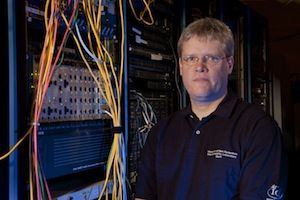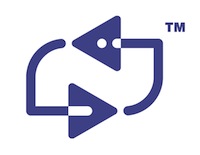- QUICK BIO
NAME: AVnu Alliance AVB Certification
HEADQUARTERS: AVnu Consortium at the University of New Hampshire InterOperability Lab
OBJECTIVE: Develop a rigorous AVB scheme to assure end-users that certified bridges are compliant with every aspect of the relevant IEEE standards.
At ISE 2013, held in Amsterdam, The Netherlands January 29-31, AVnu Alliance announced the opening of the Audio Video Bridging (AVB) certification for its member manufacturers, representing the most important milestone yet in the consortium’s mission to advance AVB networking.
Heading up the implementation of AVnu certification testing is Bob Noseworthy, chief engineer and manager of the AVnu Consortium at the University of New Hampshire InterOperability Lab (UNH-IOL), the third-party laboratory whose other distinguished clients have included OpenFabrics Alliance and Wi-Fi Alliance. As Noseworthy explained to SCN, the rigorous AVB scheme has been developed to assure end-users that certified bridges are compliant with every aspect of the relevant IEEE standards.
SCN: When and how did the AVB certification program start to take shape?
Bob Noseworthy: Early last year, when the technical working group within AVnu Alliance started to present us with a set of marketing requirements that were translated into what is commonly referred to in the standards space as Protocol Identification Conformance Specification (PICS). Those PICS helped to define the procedures for the testing program, and over the course of the ensuing year they were assessed and re-assessed in order to ensure that they meet the expectations of end-users. As would reasonably be expected, the whole process highlighted a number of issues that were subsequently incorporated into the updated PICS. Concurrently, we also worked hard to ensure that we have the ability to implement the tests effectively.

Bob Noseworthy, chief engineer and manager of the AVnu Consortium at the University of New Hampshire InterOperability Lab, will see to it that products are subjected to tests developed in accordance with IEEE 802.1 standards, as well as additional requirements developed by AVnu Alliance.
In both regards, we were crucially assisted by the staging of C&I validation events every two months that drew on the input of vendors who were keen to participate in the tests as we developed them. Across the board, they gave us great feedback on the tools, test plans, and the implementation. By the turn of this year, it was clear that, at last, we were ready to introduce the program.
SCN: How extensive is the certification scheme, and what are its principal stages?
BN: Very extensive—we’re talking in excess of 400 pages of conformance test requirements. Some of the tests can be performed in-house by the vendor before the product is submitted to help validate the designs, a kind of pre-test stage, if you will. Once the product has been put through to us, it is subjected to the full gamut of tests developed as a result of the IEEE 802.1 standards efforts as well as additional requirements developed by AVnu Alliance. Those tests produce detailed reports and data that is fed back to the manufacturers to help address any issues they may have. Once those have been satisfactorily resolved and the product has passed through the testing procedures without any difficulty, it can be submitted to AVnu Alliance for formal approval and the provision of the certification logo to be used on the product itself and any related marketing.
SCN: Why does the program need to be quite so detailed?
BN: The reality is, a lot of the details included in the tests are there in order for us to predict future interoperability. Now, it might be reasonably straightforward for us to take three products today and confirm that they all work together—and that may even ensure that the standards are not substantially broken. But the testing is only as good as the devices it’s linked and validated with, and for that reason the program needs to focus firmly on future conformance and interoperability, including between products that haven’t been developed yet.
SCN: How long will the certification process take?
BN: We are working towards a two-week cycle from submission to certification. Right now we can’t quite meet that goal because not all of the test processes are automated, obliging us to rely on some manual tests carried out by student engineers. But it’s only a matter of time before we do have full automation and the kind of very rapid turnaround that we would like to see.
As the program gets underway, I have at least four bridges under my roof that I am working with, and the expectation of more to follow in the near future.
SCN: It’s early days, of course, but what do you think will be the ultimate value of the certification program?
BN: I believe it to be significant in two primary aspects. Firstly, it represents a leap forward for pro AV in terms of bringing structured performance testing to vendors. Secondly, there is the testing process itself, which is both complex and challenging. We are going to great lengths to test a lot of moving pieces so end-users can be assured that they will not be impacted by potential issues with these products.
It’s certainly been a challenging process to reach this point, but we are confident about the integrity of the certification program and are looking forward to it reaching its full potential in the months and years ahead.










